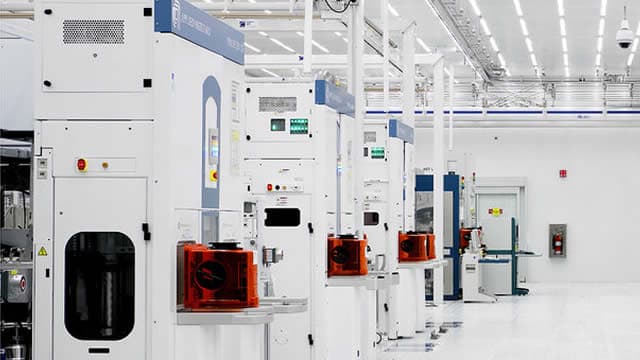Better Artificial Intelligence (AI) Stock: Advanced Micro Devices vs. Micron Technology

Summary
The article compares Advanced Micro Devices (AMD) and Micron Technology (MU) as AI stock investments. AMD is a strong contender in AI accelerators with its MI300X, challenging NVIDIA. Micron is crucial for AI's memory needs, providing high-bandwidth memory. AMD offers direct exposure to AI processing innovation, while Micron benefits from the broader demand for high-performance memory. Both are vital to the AI revolution, with differing risk-reward profiles based on their roles in the AI value chain.
Better Artificial Intelligence (AI) Stock: Advanced Micro Devices vs. Micron Technology
The AI Chip Revolution: A Growing Demand
The demand for artificial intelligence (AI) chips has been increasing at a nice pace in the past few years, transforming the technology landscape. Major cloud service providers (CSPs), hyperscalers, and governments have been spending a lot of money on shoring up their cloud infrastructure so that they can run AI workloads. This surge in investment is driven by the imperative to process vast amounts of data, train complex AI models, and deploy AI-powered applications across various industries, from healthcare to finance and autonomous driving.
Advanced Micro Devices (AMD): A Strong Contender in AI
Advanced Micro Devices (AMD) has emerged as a formidable competitor in the AI chip market, traditionally dominated by NVIDIA. AMD's MI series of Instinct accelerators, particularly the MI300X, is designed to challenge NVIDIA's H100 in data centers. The MI300X boasts impressive memory bandwidth and capacity, crucial for large language models (LLMs) and other demanding AI workloads. AMD's strategy involves leveraging its strong CPU heritage and integrating it with its GPU capabilities to offer a comprehensive solution for AI infrastructure. The company's partnerships with key cloud providers and its open-source software initiatives, like ROCm, are aimed at fostering a robust ecosystem for its AI hardware. Investors should watch for continued adoption of AMD's MI300 series and its ability to scale production to meet the burgeoning demand.
Micron Technology (MU): The Memory Backbone of AI
While AMD focuses on the processing power, Micron Technology (MU) plays an equally critical, albeit different, role in the AI ecosystem. AI workloads are incredibly memory-intensive, requiring high-bandwidth memory (HBM) and high-capacity DRAM. Micron is a leading producer of these essential components. Its HBM3 and HBM3E solutions are vital for feeding data to AI accelerators like those from AMD and NVIDIA. As AI models grow larger and more complex, the demand for faster and denser memory solutions will only intensify, directly benefiting Micron. The company's technological advancements in memory manufacturing and its strategic focus on high-value, high-performance memory products position it well to capitalize on the AI boom. Micron's revenue and profitability are closely tied to the capital expenditures of data center operators and AI chip manufacturers.
Investment Considerations: AMD vs. Micron
When comparing AMD and Micron as AI investments, it's essential to consider their distinct positions in the value chain. AMD offers direct exposure to the AI accelerator market, competing for market share in the high-growth segment of AI processing. Its success hinges on its ability to innovate, secure design wins, and effectively compete against established players. Micron, on the other hand, provides a more foundational play, benefiting from the overall growth in AI infrastructure regardless of which specific AI accelerator gains dominance. Its fortunes are tied to the broader demand for high-performance memory, which is a universal requirement for AI.
For investors seeking direct exposure to AI processing innovation and market share gains, AMD presents a compelling option with higher potential upside but also higher competitive risk. For those looking for a more diversified and perhaps less volatile way to invest in the AI infrastructure build-out, Micron offers exposure to the indispensable memory component of AI, benefiting from the increasing memory content per server. Both companies are critical to the AI revolution, but their risk-reward profiles differ based on their specific contributions to the AI value chain.
Market Outlook and Future Trends
The AI chip market is projected to continue its rapid expansion, driven by advancements in generative AI, edge AI, and the increasing adoption of AI across enterprises. This sustained growth will fuel demand for both advanced processors and high-performance memory. Supply chain resilience, manufacturing capacity, and technological breakthroughs in chip architecture and memory density will be key determinants of success for both AMD and Micron. Investors should monitor quarterly earnings reports, product roadmaps, and strategic partnerships to gauge the companies' progress in this dynamic market. The long-term outlook for both companies remains positive given the foundational role they play in the ongoing AI revolution.